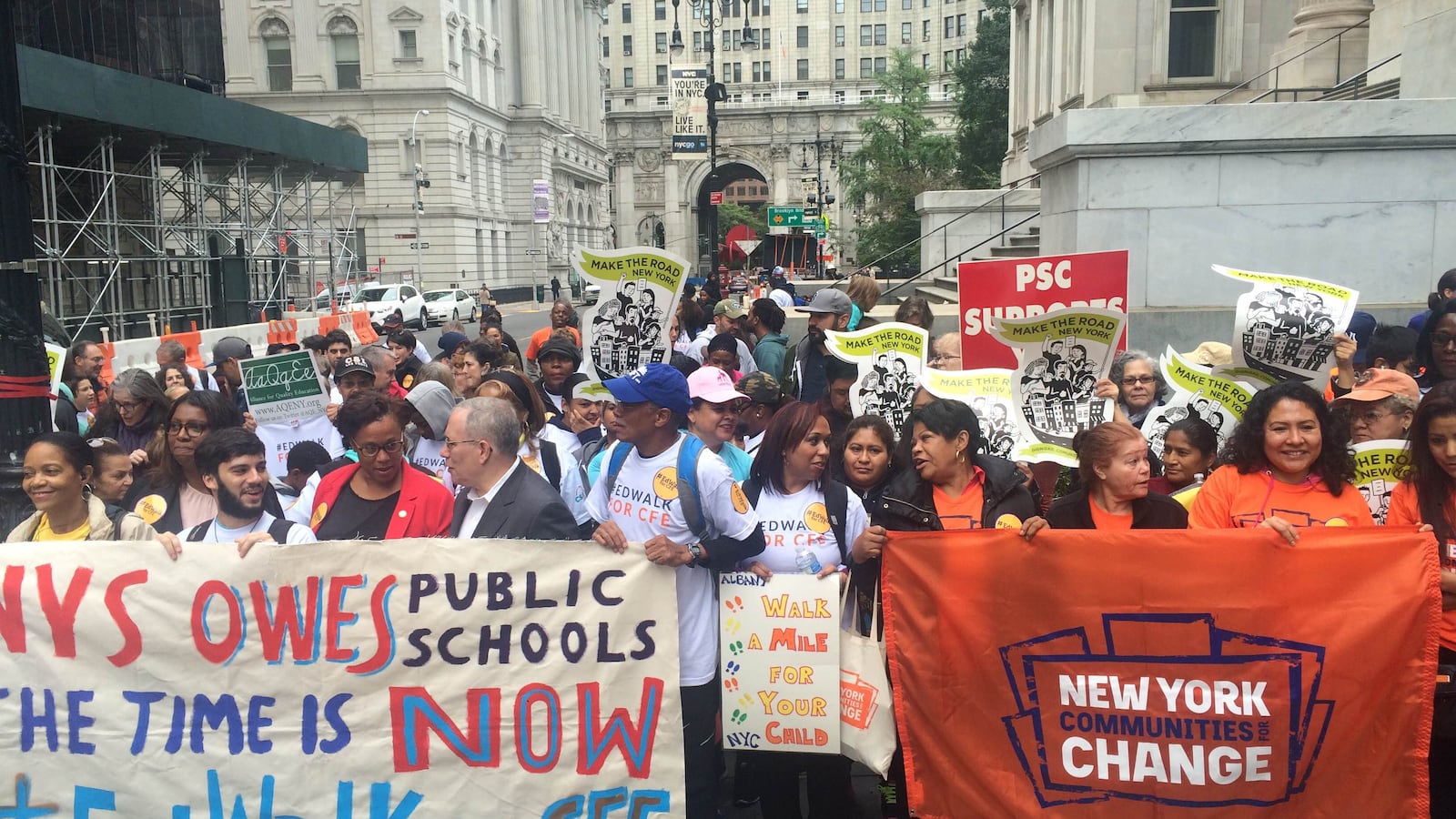Supporters of the Campaign for Fiscal Equity are celebrating their 10-year anniversary with what has become a familiar ritual: fighting for funding they’ve already won.
More than 20 parents, students and educators are marching 150 miles from New York City to Albany to demand the state pay billions of dollars they say New York’s schools are owed under the terms of a 2006 settlement.
The suit argued that the state needed to increase education funding in needy school districts in order to provide all students with a sound basic education. But after the recession hit, the will to funnel billions more into schools waned.
This is not the first time supporters have tried to draw attention to the missing funds. The Alliance for Quality Education (AQE), an organization founded to further the Campaign for Fiscal Equity, has lobbied the legislature for years, released multiple reports, and created a database that shows how much individual schools should be paid under the settlement.
Still, after years of organizing, schools across the state are still short $3.9 billion they’re entitled to under the settlement, which includes $1.6 billion for New York City alone, according to the latest AQE report.
Yet, supporters say this could be a moment for change. In recent years, the state’s political winds have shifted — and backers of the Campaign for Fiscal Equity say the shift is in their favor.
After years of turmoil over state education reforms, last year’s legislative session saw a renewed focus on school funding. Plus, the new chancellor of New York state’s Board of Regents, Betty Rosa, has signaled she is on board to fight for more resources. And schools Chancellor Carmen Fariña brought up the funding gap in her testimony to state officials last year.
Any serious funding increase still faces an uphill battle in the legislature, but Billy Easton, executive director of the Alliance for Quality Education, said legislators may be ready to revisit the matter.
“We had a lot of other issues that really sucked up a lot of the air in Albany,” Easton said. “All of these things that were kind of clogging up the air space are cleared away.”
If you’re looking to get up to speed, here’s a quick history of the Campaign for Fiscal Equity:
- In 2006, after a 13-year fight, a New York State Court of Appeals ruled the state owed schools more money in order to provide students with a “sound basic education.”
- The state set out to provide billions in funds to comply with the lawsuit in 2007 and 2008.
- But in 2009, the recession caused the plans to stall. During that year, some wondered if the campaign had failed to deliver on its promise.
- In 2011, the Campaign for Fiscal Equity almost dissolved before becoming part of the Education Law Center. The campaign’s struggle was seen as reflective of a greater shift in education advocacy. “The old mantra was that urban districts failed because they have been historically underfunded; now, advocates are more likely to argue that funding is necessary but not sufficient,” Chalkbeat wrote at the time.
- The next few years were dominated by other education reforms. For instance, the state fought for Race to the Top funding, adopted Common Core and revised teacher evaluations.
- Last year, the state began backing away from those reforms, and the legislative session seemed to refocus on school funding. The state restored the Gap Elimination Adjustment (a funding cut that mainly hurt wealthier districts) and overall, oversaw a $1.3 billion increase in school aid.
- Still, state officials did not fully restore the money owed to schools under the Campaign for Fiscal Equity. “This budget fails to address fundamental educational inequality based on both race and income,” Easton said at the time.

